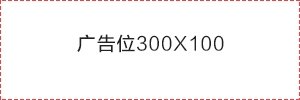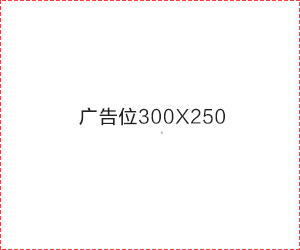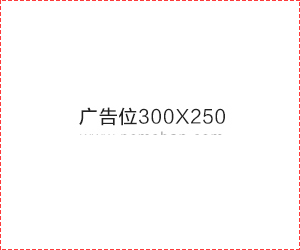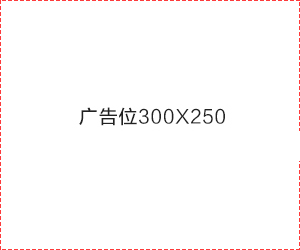Takeda Announces Pha
Takeda Announces Phase 3 Topline Results for Soticlestat (TAK-935) in Patients with Dravet Syndrome and Lennox-Gastaut Syndrome
• SKYLINE Study in Dravet Syndrome Narrowly Missed its Primary Endpoint of Reduction in Convulsive Seizure Frequency and Showed Clinically Meaningful and Nominally Significant Effects in Multiple Key Secondary Efficacy Endpoints
• SKYWAY Study in Lennox-Gastaut Syndrome Missed its Primary Endpoint of Reduction in Major Motor Drop Seizures
• Soticlestat Showed a Consistent and Favorable Safety and Tolerability Profile in Both Studies
• Takeda Will Move Forward to Discuss the Totality of the Data with Regulatory Authorities
OSAKA, Japan & CAMBRIDGE, Mass. -- (BUSINESS WIRE) --
Takeda (TSE:4502/NYSE:TAK) today announced topline data from its SKYLINE and SKYWAY studies.
SKYLINE (TAK-935-3001) was a multicenter, randomized, double-blind Phase 3 study that evaluated soticlestat (TAK-935) plus standard of care versus placebo plus standard of care in patients with refractory Dravet syndrome (DS).1 Soticlestat narrowly missed the primary endpoint of reduction from baseline in convulsive seizure frequency as compared to placebo (p-value = 0.06). Among the six key secondary endpoints, soticlestat showed clinically meaningful and nominally significant results in the responder rate, measures of caregiver and clinician global impression of improvement, and seizure intensity and duration scales over the 16-week treatment period (all p-values ≤ 0.008).
SKYWAY (TAK-935-3002) was a multicenter, randomized, double-blind Phase 3 study that evaluated soticlestat plus standard of care versus placebo plus standard of care in patients with refractory Lennox-Gastaut syndrome (LGS).2 Soticlestat missed the novel primary endpoint of reduction from baseline in Major Motor Drop (MMD) seizure frequency as compared to placebo.
In SKYLINE and SKYWAY, some pre-specified subgroups of patients also showed nominally significant treatment effects on the primary and secondary efficacy endpoints of caregiver and clinician global impression of improvement, and seizure intensity and duration scales over the 16-week treatment period. Further analyses are being conducted.
Soticlestat was generally well tolerated in both SKYLINE and SKYWAY studies and demonstrated a safety profile consistent with the findings of previous studies.
“We are grateful to all the participants and their families, as well as investigators and clinical staff for their participation in these important studies,” said Sarah Sheikh, M.Sc., B.M., B.Ch., MRCP, Head, Neuroscience Therapeutic Area Unit and Head, Global Development at Takeda. “Even with currently available therapies, we know that many patients with developmental encephalopathies like DS and LGS still experience persistent unmet need across multiple dimensions, such as seizure burden and treatment tolerability. While we would have wished for more declarative results on the primary endpoints, we are encouraged by positive outcomes seen in the totality of the data and are looking forward to engaging health authorities to determine the best path forward.”
In the Phase 2 study, ELEKTRA, soticlestat demonstrated a statistically significant reduction of seizures from baseline compared to placebo (p-value = 0.002) in the combined DS and LGS study population during the full treatment period.3 In the DS cohort, statistically significant reduction in convulsive seizure frequency from baseline compared to placebo (p-value = 0.0007) was also achieved.3 In a pooled analysis of SKYLINE and the DS cohort of the Phase 2 ELEKTRA study, soticlestat also showed a reduction from baseline in convulsive seizure frequency compared to placebo (p-value = 0.001).
Takeda will engage with regulatory authorities to discuss the totality of the data generated by these studies to determine next steps. Takeda will also plan to present results of both Phase 3 studies at an upcoming scientific congress.
Takeda is continuing to assess the financial impacts of the study results, including impairment loss for intangible assets, on the first quarter ending June 30, 2024 and will communicate as necessary in due course.
About Soticlestat (TAK-935)
Soticlestat (TAK-935) is an investigational, first-in-class potent and selective inhibitor of cholesterol 24-hydroxylase (CH24H), an enzyme primarily expressed in the brain that catabolizes cholesterol to 24-S hydroxycholesterol (24HC) resulting in a reduction in glutamatergic hyperexcitability.4,5
About Dravet Syndrome and Lennox-Gastaut Syndrome
Dravet syndrome and Lennox-Gastaut syndrome are types of developmental and epileptic encephalopathies (DEEs), a group of rare epilepsy syndromes that typically become apparent during infancy or early childhood and are highly drug-resistant to many antiseizure medications.6,7 Individuals with DS and LGS also suffer from common non-seizure symptoms such as problems with alertness, communication and disruptive behavior.7,8
Dravet syndrome is most commonly caused by a genetic mutation in the SCN1A gene and affects approximately 1 in 15,000 to 1 in 21,000 people in the United States.7,9 Dravet syndrome is characterized by prolonged focal seizures that can evolve to convulsive tonic-clonic seizures.7 Children with Dravet syndrome experience developmental disabilities as seizures increase.7 Other common symptoms include changes in appetite, difficulty balancing and a crouched gait when walking.7
Lennox-Gastaut syndrome is estimated to affect fewer than 1 in 1,000 people in the United States.10 Lennox-Gastaut syndrome is a heterogeneous condition and characterized by several different types of seizures, most commonly atonic (drop), tonic and atypical absence seizures.6 Children with Lennox-Gastaut syndrome may also develop cognitive dysfunction, delays in reaching developmental milestones and behavioral problems.6,8 Lennox-Gastaut syndrome can be caused by a variety of underlying conditions but in some cases no cause can be identified.8
About Takeda’s SKYLINE Trial
The Phase 3 SKYLINE is a global, multicenter, 1:1 randomized, double-blind, placebo-controlled, parallel group study to evaluate the efficacy, safety, and tolerability of soticlestat as adjunctive therapy in pediatric and young adult subjects with Dravet syndrome. The primary endpoint was percent change from baseline in convulsive seizure frequency per 28 days in subjects receiving soticlestat as compared with placebo during the full treatment period. Key secondary endpoints included evaluation of effects on treatment response, Care GI-I (Caregiver Global Impression of Improvement), CGI-I, CGI-I Non-Seizure Symptoms, QI-Disability, CGI-I seizure intensity and duration.1
A total of 144 subjects aged 2 – 21 years were enrolled in the study. The diagnosis of Dravet syndrome was adjudicated independently by the Epilepsy Study Consortium. The study treatment period was 16 weeks including a 4-week titration period and 12 weeks maintenance period. Patients were randomized 1:1 to receive either soticlestat or matching placebo twice daily (BID) added to current antiseizure therapy administered orally or via enteral tube feeding. Soticlestat was started at 100 mg BID or weight equivalent dose for 7 days and titrated up weekly, based on tolerability, up to 300 mg BID or weight equivalent dose. Upon completion of the study, willing subjects had the option to enroll in an ongoing open-label extension study (ENDYMION 2).1,11,12
About Takeda’s SKYWAY Trial
The Phase 3 SKYWAY is a global, multicenter, 1:1 randomized, double-blind, placebo-controlled, parallel group study to evaluate the efficacy, safety, and tolerability of soticlestat as adjunctive therapy in pediatric and adult subjects with Lennox-Gastaut syndrome. The primary endpoint was percent change from baseline in Major Motor Drop (MMD) seizure frequency per 28 days in subjects receiving soticlestat as compared with placebo during the full treatment period. Key secondary endpoints included evaluation of effects on treatment response, Care GI-I, CGI-I, CGI-I Non-Seizure Symptoms, QI-Disability, CGI-I seizure intensity and duration.2
A total of 270 subjects aged 2 – 55 years were enrolled in the study. The diagnosis of Lennox-Gastaut syndrome was adjudicated independently by the Epilepsy Study Consortium. The study treatment period was 16 weeks including a 4-week titration period and 12 weeks maintenance period. Patients were randomized 1:1 to receive either soticlestat or matching placebo twice daily (BID) added to current antiseizure therapy administered orally or via enteral tube feeding. Soticlestat was started at 100 mg BID or weight equivalent dose for 7 days and titrated up weekly, based on tolerability, up to 300 mg BID or weight equivalent dose. Upon completion of the study, willing subjects had the option to enroll in an open-label extension study (ENDYMION 2).2,11,12
About Takeda
Takeda is focused on creating better health for people and a brighter future for the world. We aim to discover and deliver life-transforming treatments in our core therapeutic and business areas, including gastrointestinal and inflammation, rare diseases, plasma-derived therapies, oncology, neuroscience and vaccines. Together with our partners, we aim to improve the patient experience and advance a new frontier of treatment options through our dynamic and diverse pipeline. As a leading values-based, R&D-driven biopharmaceutical company headquartered in Japan, we are guided by our commitment to patients, our people and the planet. Our employees in approximately 80 countries and regions are driven by our purpose and are grounded in the values that have defined us for more than two centuries. For more information, visit www.takeda.com.
Forward-Looking Statements
This press release and any materials distributed in connection with this press release may contain forward-looking statements, beliefs or opinions regarding Takeda’s future business, future position and results of operations, including estimates, forecasts, targets and plans for Takeda. Without limitation, forward-looking statements often include words such as “targets”, “plans”, “believes”, “hopes”, “continues”, “expects”, “aims”, “intends”, “ensures”, “will”, “may”, “should”, “would”, “could”, “anticipates”, “estimates”, “projects” or similar expressions or the negative thereof. These forward-looking statements are based on assumptions about many important factors, including the following, which could cause actual results to differ materially from those expressed or implied by the forward-looking statements: the economic circumstances surrounding Takeda’s global business, including general economic conditions in Japan and the United States; competitive pressures and developments; changes to applicable laws and regulations, including global health care reforms; challenges inherent in new product development, including uncertainty of clinical success and decisions of regulatory authorities and the timing thereof; uncertainty of commercial success for new and existing products; manufacturing difficulties or delays; fluctuations in interest and currency exchange rates; claims or concerns regarding the safety or efficacy of marketed products or product candidates; the impact of health crises, like the novel coronavirus pandemic, on Takeda and its customers and suppliers, including foreign governments in countries in which Takeda operates, or on other facets of its business; the timing and impact of post-merger integration efforts with acquired companies; the ability to divest assets that are not core to Takeda’s operations and the timing of any such divestment(s); and other factors identified in Takeda’s most recent Annual Report on Form 20-F and Takeda’s other reports filed with the U.S. Securities and Exchange Commission, available on Takeda’s website at: https://www.takeda.com/investors/sec-filings-and-security-reports/ or at www.sec.gov. Takeda does not undertake to update any of the forward-looking statements contained in this press release or any other forward-looking statements it may make, except as required by law or stock exchange rule. Past performance is not an indicator of future results and the results or statements of Takeda in this press release may not be indicative of, and are not an estimate, forecast, guarantee or projection of Takeda’s future results.
Medical information
This press release contains information about products that may not be available in all countries, or may be available under different trademarks, for different indications, in different dosages, or in different strengths. Nothing contained herein should be considered a solicitation, promotion or advertisement for any prescription drugs including the ones under development.
References
1. Soticlestat as an Add-on Therapy in Children and Young Adults With Dravet Syndrome. ClinicalTrials.gov. Published June 25, 2021. Last accessed June 14, 2024. https://classic.clinicaltrials.gov/ct2/show/NCT04940624.
2. A Study of Soticlestat as an Add-on Therapy in Children, Teenagers, and Adults With Lennox-Gastaut Syndrome. Published June 24, 2021. Last accessed June 14, 2024. https://clinicaltrials.gov/study/NCT04938427?term=TAK-935-3002&rank=1
3. Hahn CD, Jiang Y, Villanueva V, et al. A phase 2, randomized, double‐blind, placebo‐controlled study to evaluate the efficacy and safety of SOTICLESTAT as adjunctive therapy in pediatric patients with Dravet Syndrome or Lennox–Gastaut syndrome (elektra). Epilepsia. 2022;63(10):2671-2683. doi:10.1111/epi.17367
4. Nishi T, Kondo S, Miyamoto M, et al. Soticlestat, a novel cholesterol 24-hydroxylase inhibitor shows a therapeutic potential for neural hyperexcitation in mice. Scientific Reports. 2020;10(1). doi:10.1038/s41598-020-74036-6
5. Lund EG, Xie C, Kotti T, Turley SD, Dietschy JM, Russell DW. Knockout of the cholesterol 24-hydroxylase gene in mice reveals a brain-specific mechanism of cholesterol turnover. Journal of Biological Chemistry. 2003;278(25):22980-22988. doi:10.1074/jbc.m303415200
6. Arzimanoglou A, French J, Blume WT, et al. Lennox-Gastaut syndrome: a consensus approach on diagnosis, assessment, management, and trial methodology. The Lancet Neurology. 2009;8(1):82-93. doi:10.1016/s1474-4422(08)70292-8
7. Anwar A, Saleem S, Patel UK, Arumaithurai K, Malik P. Dravet Syndrome: An Overview. Cureus. 2019;11(6). doi:10.7759/cureus.5006
8. Jahngir MU, Ahmad MQ, Jahangir M. Lennox-Gastaut Syndrome: In a Nutshell. Cureus. 2018;10(8). doi:10.7759/cureus.3134
9. Wu YW, Sullivan J, McDaniel SS, et al. Incidence of Dravet Syndrome in a US Population. Pediatrics. 2015;136(5):e1310-e1315. doi:10.1542/peds.2015-1807
10. Trevathan E, Murphy CC, Yeargin‐Allsopp M. Prevalence and descriptive epidemiology of Lennox‐Gastaut Syndrome among Atlanta Children. Epilepsia.1997;38(12):1283-1288. doi:10.1111/j.1528-1157.1997.tb00065.x
11. A Study of Soticlestat in Adults and Children With Rare Epilepsies (Endymion 1). Published August 18, 2017. Last accessed June 14, 2024. https://clinicaltrials.gov/study/NCT03635073
12. Ovid Therapeutics Announces Positive Initial Data from Ongoing ENDYMION Open-Label Extension Trial. Published September 23, 2019. Accessed June 14, 2024. https://investors.ovidrx.com/news/news-details/2019/Ovid-Therapeutics-Announces-Positive-Initial-Data-from-Ongoing-ENDYMION-Open-Label-Extension-Trial-of-Soticlestat-in-People-with-Rare-Epilepsies-09-23-2019/default.aspx
View source version on businesswire.com: https://www.businesswire.com/news/home/20240617592767/en/
-
一只船教育最新消息让人兴奋,退费工作
02-27 来源:阿里教育网
-
BOP 天堂鸟与大家逆境中冒险
04-02 来源:文旅新闻网
-
新沐教育最新消息:响应最新政策号召,
02-27 来源:网络
-
践行新型智库建设精神 创建中国创新策划
02-02 来源:中华企业在线
-
言成教育最新消息,平台为了保证退费工
02-27 来源:阿里教育网
-
学慧网最新消息:想办理退费,请一定要
02-27 来源:阿里教育网
-
学霸君最新消息 2023年平台计划完成所有
02-27 来源:阿里教育网
-
逸成教育最新消息:现在学费退费了,学
02-28 来源:阿里教育网
-
兴为教育发布了退费的最新消息,学员们
02-27 来源:阿里教育网
-
学璐教育新一轮退费公告来了,退费工作
02-27 来源:阿里教育网





























